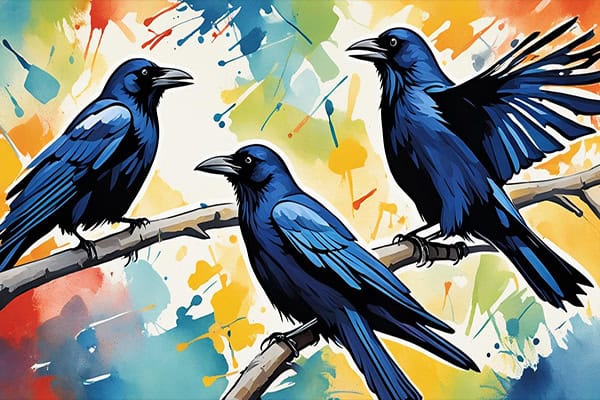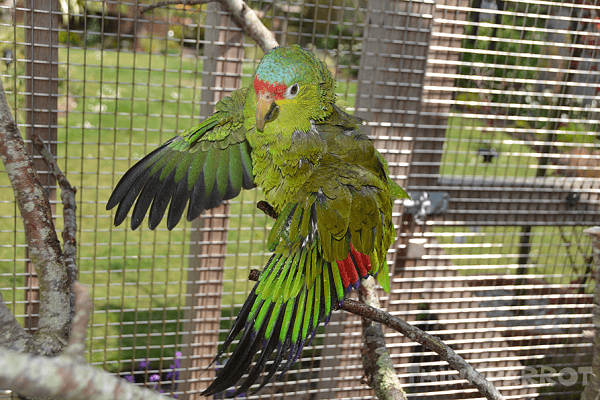Can Crows Talk Like Parrots and Humans?
What do you think Can Crows really Talk Like Parrots and Humans? If you’ve watched corvids, you might have seen one mimicking sounds. Maybe you saw a Steller’s jay making you think there was a hawk. Or, there’s a famous story of a crow at an Oregon school, using swear words with kids. We know some birds can copy, but why can a bird talk while a chimp can’t, even though they’re so similar to us?
Crows might not be bright or sing nicely, but they are clever. Their smarts have made people wonder if they can really talk. Surprisingly, they can. Crows mimic words people teach them. What’s really spooky is they can sound like the person teaching them, using the same style and voice.
Think parrots are the only birds that can talk? Think again! Crows are incredibly intelligent. In this blog, we’ll look into whether crows can talk. When we say talk, we mean making word-like sounds. Like parrots, crows copy the sounds they hear. They can even learn to mimic human speech and other noises around them.
Here we’ll learn about Can Crows Talk Like Parrots and Humans
Unraveling the Mystery of Crow Vocalizations
Crows can mimic many sounds, from barks to even human speech. This skill has amazed both researchers and those who love birds. By studying crow vocalizations and their avian vocal abilities, we learn about the mechanisms behind this amazing ability.
Mimicry and Vocal Range
Crows are amazing mimics that copy sounds around them. They mimic dogs by barking and sometimes sound like cats or water birds. They often include the hooting of Barred Owls. This is interesting because Barred Owls are also easily imitated by people who watch birds. What crows mimic depends on what sounds they hear the most.

Their intelligence and social and communicative nature help them mimic sounds well.
Anatomical Adaptations for Speech
Crows and other talking birds have special body parts that help them speak. While birds have a larynx, it doesn’t make sounds. They have a syrinx instead, which is at the bottom of their trachea. It lets them make many different sounds, including producing sounds separately on each side. Sometimes, they can make sounds with both sides at the same time.
Parrots have an extra advantage with their fleshy, bird-like tongue. It helps them control the air in a way that lets them talk like humans. This special control over their voices helps birds produce their unique sounds, whether they are mimicking or not.
Brain Power: The Key to Avian Vocal Abilities
The special vocal layout birds have, called the syrinx, helps them make sounds like us. But, it doesn’t explain everything. The real magic is in the brain, where birds and primates think very differently.
Neural Complexity in Birds
Birds can act human-like when it comes to making sounds, more than non-human primates. This happens in their cortical association areas. These areas in the brain handle complex actions. Mainly, complex brains in birds let them copy a wide variety of sounds, even our speech.
Cognitive Differences Between Primates and Birds
New research shows birds might think in ways we thought only we could. For example, crows get things like recursion. This means they can do tasks like ours, about 40% as well as kids, without special training.
Also, crows pick up on sound patterns quickly and use them smartly. This skill, mixed with their strong vocal control, shows off their unique talking skills. It really makes birds stand out from monkey and ape relatives in this smartness area.
Exploring the Reasons Behind Crow Mimicry
Vocal mimicry is a key part of how certain birds communicate and signal to others. They do it to show they’re a good mate, to protect their territory, or to make friends. It’s clear they use mimicry to interact, even though the reasons might not be obvious.
Mate Attraction and Territorial Defense
Some say Steller’s jays copy hawk sounds to warn others or to scare off enemies. But there’s no proof for this idea. A 2017 study showed these jays rarely mimic when faced with danger. They tend to mimic early in the breeding season to impress their mate.
Social Bonding and Group Communication
Crows show a high level of intelligence through their complex social life and communication. They copy sounds from other creatures and even humans to get closer to their partners or friends. This use of mimicry helps them interact, though scientists are not always sure why they do it.

The Captivating World of Crow Communication
Crows, like all corvids, are famous for their smart crow vocalizations and corvid communication. They use many sounds and movements to talk with other crows. This helps them share a lot of different information with their groups.
Alarm Calls and Warnings
Most crows say a loud “caw!” to talk to each other. But, they also have other sounds for different times. For example, when they are scared, they shout “caw” notes in a sharp and loud way. This cautions each other about dangers, such as people or big birds of prey like owls and hawks.
Food-related Vocalizations
When they spot food, their calls get softer but more detailed. They use different sounds for different meals, like one for dead animals and another for nuts or fruits. Plus, American Crows have a special “double-caw” when guarding their area, and they also make a special sound that’s like a rattle.
Crow “Songs” and Social Interactions
One of the most fascinating things about crows is their singing. They have soft yet complicated songs, filled with various sounds, that can last for a long time. All crows, no matter their age, use these tunes to connect and chat when they are together.

Can Crows Talk?
Crows can mimic the sounds they hear. They can copy human speech too. They do this like parrots do.
Anecdotal Evidence and Observations
Crows kept in captivity can mimic words. They might not know what they’re saying though. Still, it’s surprising how well they can copy like having the same voice as their teacher.
This skill comes from their big brains and good memory. They can also imitate various sounds in their natural environment.
Scientific Studies on Crow Mimicry
Studies have found crows can learn over 100 sounds. These include human speech and sounds from birds and animals. They have a big vocabulary thanks to their smart brains and mimicry skills.
Comparing Vocal Abilities: Crows vs. Parrots
Crows and parrots both have amazing talking bird skills. But they use different ways to speak. Parrots can speak like humans because of their special tongues. They can make lots of sounds because of this. Crows, on the other hand, don’t have tongues like parrots. But they are very smart and can make different sounds by using their voice box in special ways.
This means parrots and crows can both mimic many sounds. Parrots are famous for copying what we say. Crows can do this too, along with other sounds like a dog barking. Even though crows and parrots use different parts of their bodies to talk, they are both very clever. This helps them make lots of different noises.
Similarities in Mimicry and Intelligence
Parrots are well known for their talking. But crows are really good at copying sounds too. It’s because they are both very smart. This intelligence lets them make sounds that we can recognize. They use this talent for many reasons, like talking to each other.
Did you know that crows can think as well as 7-year-old kids? They are good at solving problems and working with others. This is why they can learn and copy many sounds. Parrots can do this too. They learn to say many words. Both birds are smart and can talk in their own way.
| Vocal Trait | Crows | Parrots |
|---|---|---|
| Vocal Anatomy | Highly flexible syrinx | Fleshy, dexterous tongue |
| Mimicry Ability | Can mimic wide range of sounds, including human speech | Renowned for exceptional human speech mimicry |
| Intelligence | Extremely intelligent, on par with young children | Highly intelligent, with advanced cognitive abilities |
| Vocabulary | Can learn over 100 words and 50 sentences | Some parrots can learn over 1,000 words |
Crows are not as famous as parrots for talking. But they are still very skilled. They are smart and their bodies help them make many sounds. This shows that crows can talk in their own special way.
Cultural Significance and Symbolism of Talking Crows
Stories and films show how crows can mimic human speech. We learn about their smartness and adaptability. Crows are important in many cultures. They have meanings in stories, myths, and beliefs.
Check Our Previous Articles:
Representation in Folklore and Literature
Native American stories see crows as messengers from life to death. They can also be tricky. The view of crows changes with the number seen. In Norse mythology, Odin has two crows who bring him news. In Roman mythology, a white crow becomes black to show bad news to Apollo’s lover.
Crows are seen as signs of change or the time for thinking. They connect to spirit worlds, and transform, and purify spaces. Dreams with crows can tell you to think about yourself, obey spiritual rules, or show hidden meanings based on the crows’ color and number.
Ethical Considerations in Teaching Crows to Mimic
Seeing crows talk is fascinating. But, we must think about whether it’s right to teach them. It can show how smart they are and how we might communicate with them. But we must guard against taking away their freedom and harming them.
How we teach and keep crows should be very careful. Learning from them should not hurt them. We should keep them as wild as possible, so they can be happy in their own homes.
Conclusion
Crows are amazing because they can copy sounds, including our speech. They have big brains and good memories. This makes them able to repeat words and sounds they hear.
Even though we don’t fully understand what crows are saying, we know it’s complex. They use their voices in many ways, like warning others about dangers. This shows us how diverse and amazing nature is.
Learning about crows’ voices is interesting but we must be ethical. We should help crows stay in their homes and not disturb them too much. By treating crows well, we learn to value them even more.






